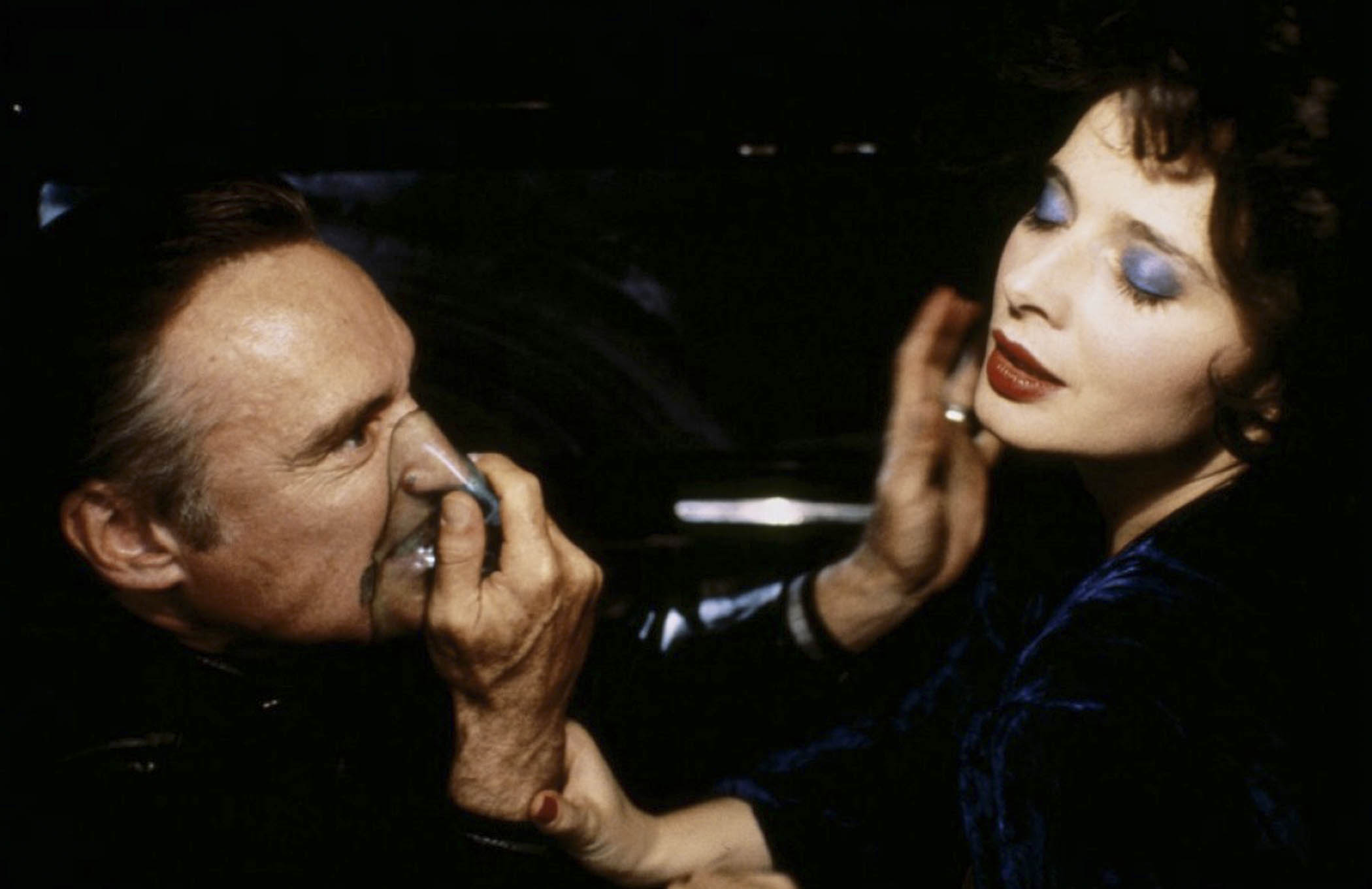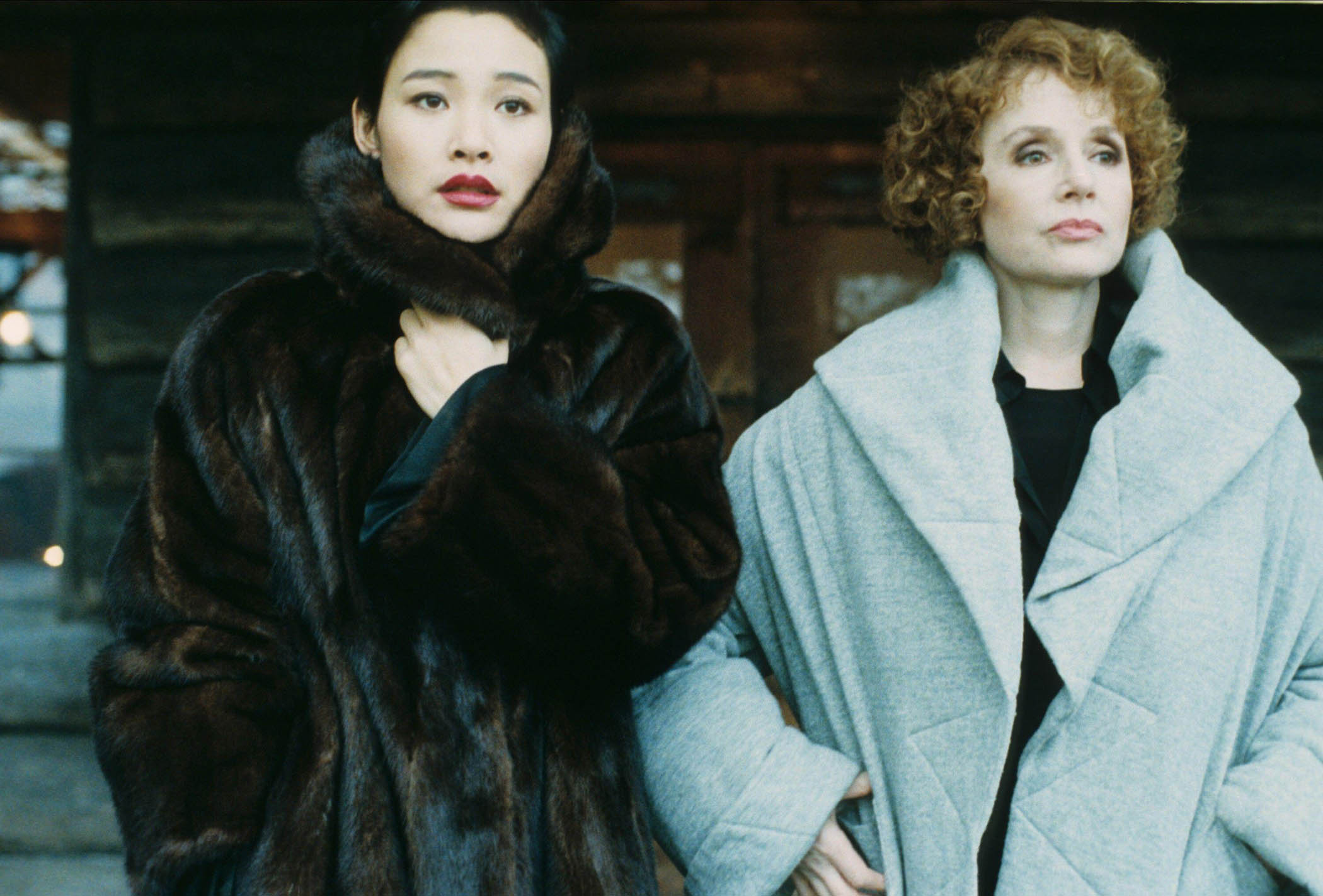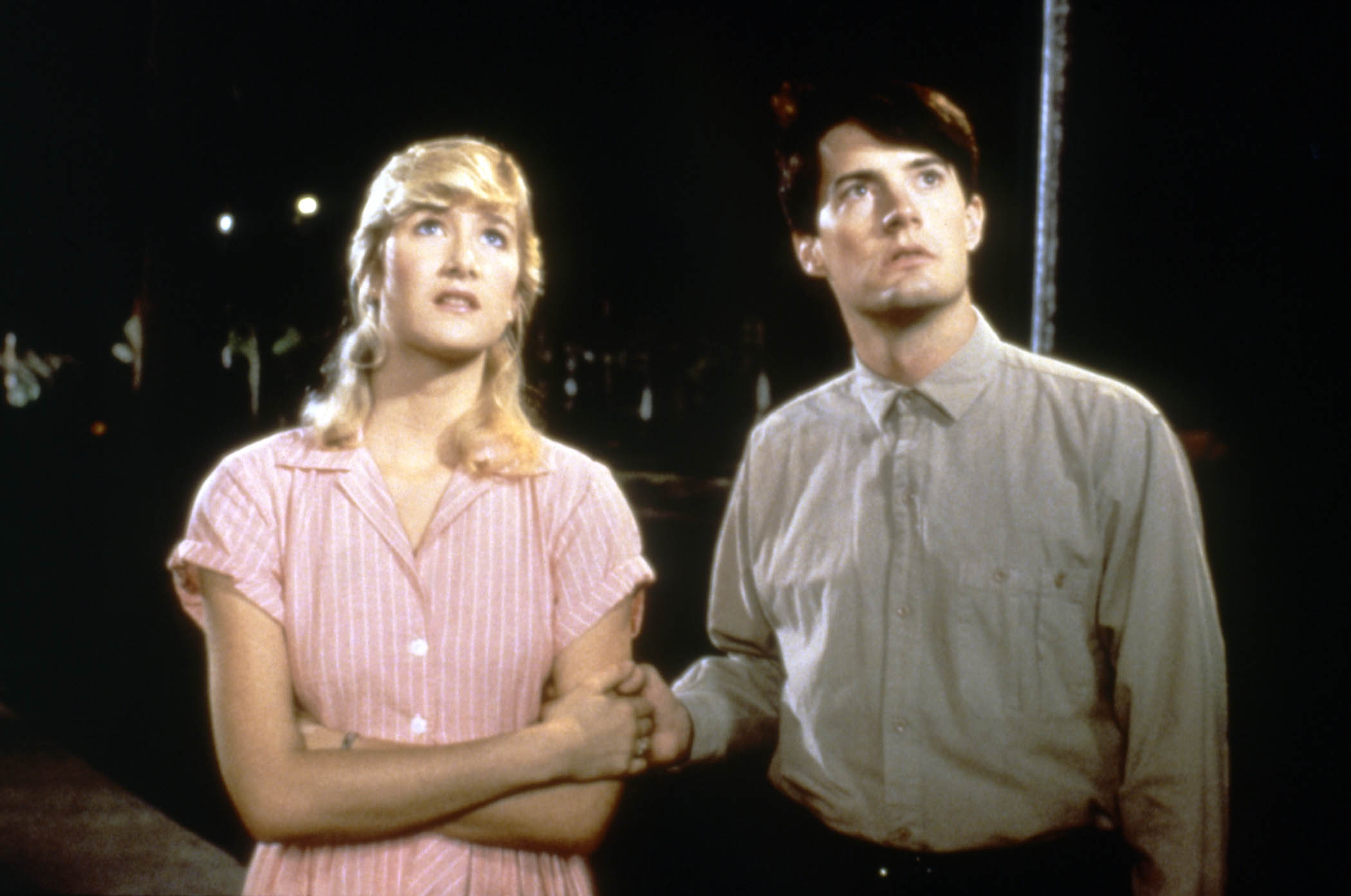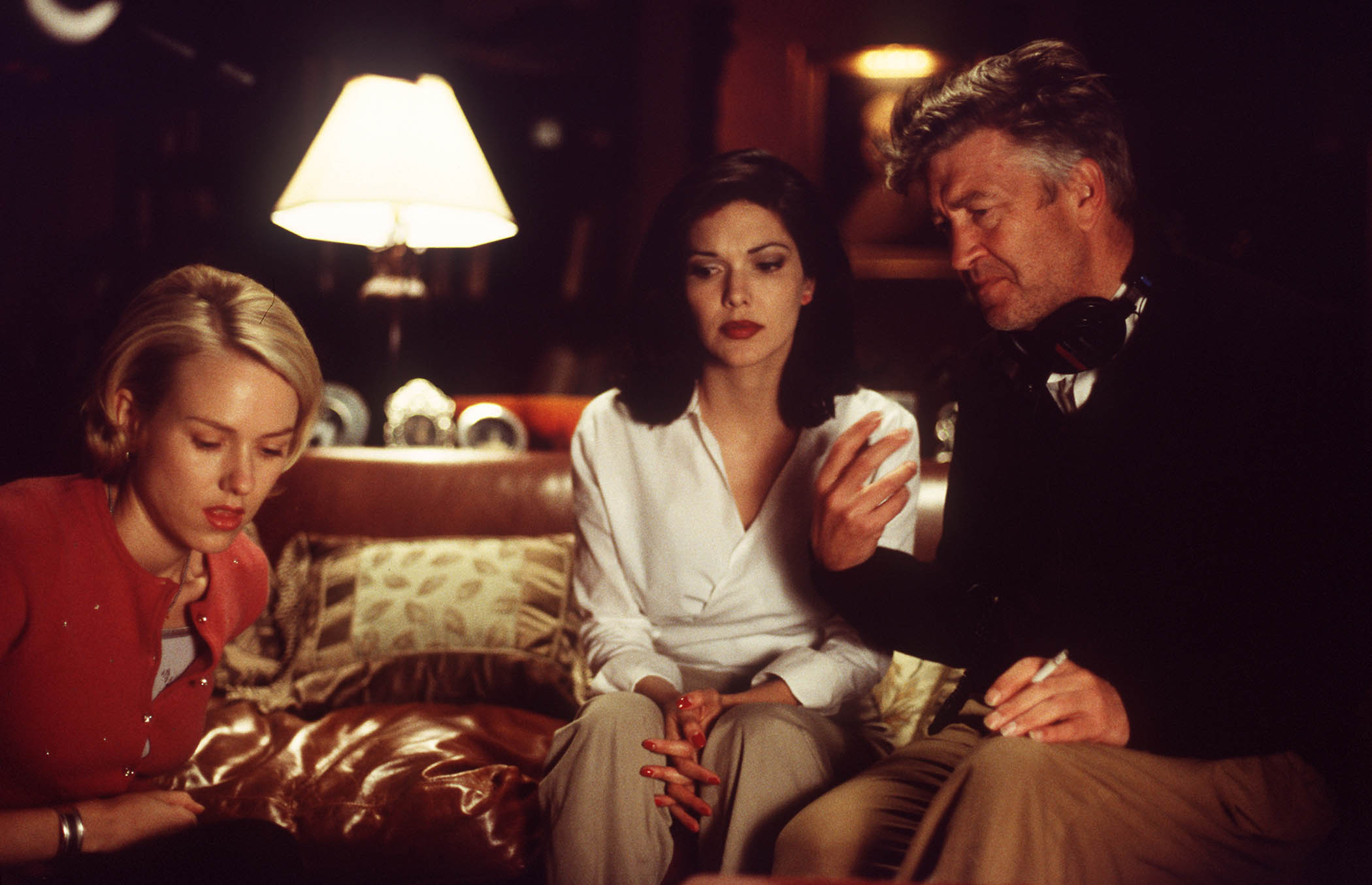The film-maker David Lynch never could resist a vamp. In Twin Peaks, the celebrated TV series he created with Mark Frost, the first woman we meet is a classic femme fatale. With her pillar box red lipstick, slicked back hair and 1940s-style fur coat, Joan Chen’s Josie Packard is not your average sawmill owner. When the series debuted in 1990, it was the women who caused a stir, with Rolling Stone hornily declaring that television had never known such “mystery babes”, who were “full of wiles and ellipses and desperation”. There’s troublemaker Audrey Horne (Sherilyn Fenn), who wears a naughty schoolgirl kilt and walks with a distinctive wiggle, and Shelly Johnson (Mädchen Amick), a beautiful, gum-chewing waitress whose husband beats her. At the centre of it all is the murdered homecoming queen Laura Palmer (Sheryl Lee), whose angelic smile masked tragic secrets. Lynch seemed in awe of a certain kind of femininity, and perhaps a little afraid of it too.
I’ve spent the last six months talking to Lynch’s collaborators about his female characters for my podcast Ladies of Lynch. The show is an attempt to offer a different perspective on the director’s legacy. Women are at the heart of his mysteries: what does that reveal about him? And how did these subversive characters come to be?
Lynch fans will know he was famously uncomfortable talking about his work, and refused to tell audiences what it might mean. Cinema, he insisted, is its own kind of language, so “it’s not right to try to say the same thing in words”. I respect his refusal to explain things. But to truly appreciate something, you have to at least try to understand it.

‘Lynch was seen as the genius, she the muse’: Dennis Hopper and Isabella Rossellini in Blue Velvet. Main image: David Lynch on the set of Mulholland Drive with Naomi Watts and Laura Harring
“Careful what you’re saying,” Isabella Rossellini told me, her brow creasing as she frowned. We were discussing the 1986 film Blue Velvet. Her character, Dorothy Vallens, is a tortured nightclub singer who endures sexual violence behind closed doors, and at times, appears to invite it too. She is afforded far more personhood than your average on-screen “victim” role. I asked the actress and model why this was Lynch’s impulse when developing the character; what was it about the way the director saw women? Rossellini disagreed with my framing. She wasn’t so sure “there is a genius who fishes something out of us”.
Rossellini spent five years in a romantic relationship with Lynch, between 1986 and 1991. She explained that when they were together, he was seen as the genius; she the muse. People frequently praised her ability to “express something wonderful, like a puppet”, she said. While Lynch was celebrated, she was treated with suspicion. When Blue Velvet was released, the critic Roger Ebert wrote that Rossellini was “asked to portray emotions that I imagine most actresses would rather not touch”, and seemed appalled that she was “degraded, slapped around, humiliated” on screen. But she and Lynch had created the character of Dorothy together. In fact, it was Rossellini who built Dorothy’s psychology, not Lynch, who hadn’t included details about her backstory in the script. The idea that directors manipulate actors “diminishes the role of the actress, and of women”, Rossellini said. She showed us Dorothy’s emotions of her own volition.
Lynch’s collaborative approach allowed him to bring out the best in many of the actors he worked with. Naomi Watts was ready to quit the industry when he cast her in 2001’s Mulholland Drive as an aspiring actress whose dreams are quickly shattered. The film satirised the performance aspect of being a Hollywood starlet and the sexuality actresses are required to turn on like a tap.

‘Full of wiles and ellipses and desperation’: Joan Chen and Piper Lauriestar in Twin Peaks
Watts seemed to understand this innately. In one scene, we see her character Betty running lines before an audition, though the script is cliched and flat. “Don’t play it for real, until it gets real,” the director advises her on the day of the audition. And so Betty makes it real, bringing her own heat to the scene playing opposite a sleazy older man. Mulholland Drive required Watts to navigate two roles: the naive Betty and, later, the bitter, hardened Diane. Looking back on the film nearly 25 years later, the New York Times declared the performance “career-defining” and “revelatory.”
Arguably, Lynch’s own career was defined by the actress Laura Dern. They first worked together on Blue Velvet, with Dern bringing an intelligence to good girl Sandy, the virtuous blond foil to Rossellini’s seductive brunette. Each subsequent project Lynch and Dern made together was an opportunity to do something new. In 1991’s Wild at Heart, she subverted her wholesome image by playing the sexually liberated Lula Fortune, and in the 2006 experimental masterpiece Inland Empire, she turned her star persona inside out again. In that film, she plays Nikki Grace, an actress whose psyche starts unravelling as she loses herself in a role. As the film critic Melissa Anderson has written, Lynch is “full of twisted compassion” for “the immiserations attendant to being an actress, to being a woman”.
Lynch, I think, had an affinity with women. He looked at them with curiosity rather than pity, attempting to show viewers what worries them and what makes them afraid. He is frequently drawn to the image of “a woman in trouble” – the tagline for Inland Empire. His daughter, the film-maker Jennifer Lynch, told me this is also ripped from real life. As children, Lynch and his older brother John witnessed a woman who had been in a domestic violence incident wandering around their neighbourhood naked. Terrified, the young Lynch froze. The memory continued to haunt him, and he recreated the scene in Blue Velvet. “She can fall into your arms, but what do you?” said Jennifer.

American actors Laura Dern and Kyle MacLachlan on the set of Blue Velvet, written and directed by David Lynch
What do you do when you see a woman in trouble and it turns out you can’t save her? For Lynch, her story is still worth telling. Watching Twin Peaks, you cannot help but notice just how many women in it suffer at the hands of violent and misogynistic men, and yet somehow still retain their power. Their sex appeal is undeniable, and so is their sexual agency. They are the ones driving the plot. Kyle MacLachlan’s special agent Dale Cooper is brought in to solve Laura Palmer’s murder, but it’s her female friends who are the risk-takers, actively searching for clues. The town’s resident oddball is known as the Log Lady, and Lynch takes her utterly seriously. “She is the witch who lives in the woods, the woman who has other ways of seeing and knowing,” Twin Peaks co-creator Mark Frost told me. “We thought, this is a fun way to update the crone.”
In Twin Peaks, the character of Laura is already dead, wrapped in plastic. By the end of the first series, we learn not only who killed her, but also how she lived. His 1992 film Fire Walk with Me takes place during the last week of Laura’s life. Lee’s performance as a teenager suffering sexual abuse at the hands of her father is heartbreaking, raw and layered. Her Laura offers a glimpse of the innocent girl on the inside, and the woman hardened by experience. Lee drew from Jennifer Lynch’s tie-in novel The Secret Diary of Laura Palmer, which detailed the character’s inner life and her traumatic past. Jennifer said she wanted to give Lee the kind of “ammunition” she could mask.
The women who helped shape Lynch’s work are masters of their craft. They included production and costume designer Patricia Norris, casting director Johanna Ray, editor Mary Sweeney, who played a huge part in finding the rhythm of Lynch’s films, and producer Sabrina Sutherland, with whom he worked for more than 30 years. Those I spoke to told me how they watched Lynch drop cigarette butts into the bucket of sand beside his director’s chair; how you never asked him questions. This was said with affection: it was their job to interpret his vision, not to query it.
When I interviewed Sutherland, she was wearing a T-shirt with the director’s face emblazoned on it. “He became like this brother to me,” she said, tearing up when I asked about his passing. With Lynch gone, it is the women he worked with who are now the keepers of the director’s secrets. As Jennifer told me, her father might have been interested in women in trouble, but “he surrounded himself with women who could handle trouble, and women who could handle him”.
Simran Hans is a London-based culture writer. She is the writer and host of Ladies of Lynch, season nine of the Mubi podcast, which is available now.
Photographs by Melissa Moseley /American Broadcasting Companies, Twin Peaks Productions, De Laurentiis Entertainment Group/Sunset Boulevard/Corbis via Getty Images/Alamy
